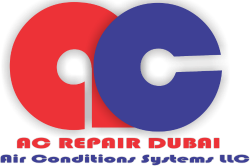How can I troubleshoot issues with my AC unit?
Introduction
An air conditioning (AC) unit is a complex system that provides comfort by regulating indoor temperature and humidity levels. However, like any mechanical system, it can encounter problems from time to time. Understanding how to troubleshoot these issues can save you time, money, and discomfort. In this guide, we’ll explore common problems with AC units and provide step-by-step instructions on how to troubleshoot them effectively.
1. Lack of Cooling
One of the most common issues with AC units is a lack of cooling. If your AC is running but not cooling the air properly, several factors could be at play:
Possible Causes:
Dirty air filters
Refrigerant leaks
Blocked condenser unit
Faulty compressor
Troubleshooting Steps:
Start by checking the air filters. Dirty filters restrict airflow, reducing the system’s efficiency. If the filters are dirty, replace them with new ones.
Inspect the outdoor condenser unit. Ensure that it’s free from debris such as leaves, twigs, or dirt. Clean the condenser coils if necessary.
Check for any signs of refrigerant leaks. You may notice hissing sounds or ice buildup on the refrigerant lines. If you suspect a leak, contact a professional HVAC technician to repair it.
Verify that the compressor is functioning correctly. Listen for unusual noises coming from the outdoor unit. If the compressor fails to turn on, it may indicate a more serious issue that requires professional attention.
2. Uneven Cooling
If certain areas of your home are cooler or warmer than others, your AC system may be experiencing uneven cooling.
Possible Causes:

Blocked vents or registers
Leaky ductwork
Improperly sized AC unit
Faulty thermostat
Troubleshooting Steps:
Check all vents and registers throughout your home to ensure they are open and unobstructed. Move furniture or objects that may be blocking airflow.
Inspect the ductwork for any visible leaks or gaps. Seal any leaks using duct tape or mastic sealant.
Consider whether your AC unit is properly sized for your home. An undersized unit may struggle to cool your space evenly. Consult with an HVAC professional to determine if your unit needs to be replaced or upgraded.
Test the thermostat to ensure it’s functioning correctly. Verify that it’s set to the desired temperature and that it’s accurately sensing the temperature in your home. If necessary, calibrate or replace the thermostat.
3. Strange Noises
Unusual noises coming from your AC unit can be a cause for concern and may indicate underlying issues.
Possible Causes:
Loose or damaged components
Dirty condenser or evaporator coils
Worn-out fan motor bearings
Refrigerant leaks
Troubleshooting Steps:
Turn off the power to your AC unit before inspecting it for any loose or damaged components. Check the fan blades, motor mounts, and other moving parts for signs of wear or damage. Tighten any loose screws or bolts.
Clean the condenser and evaporator coils to remove dirt, debris, and buildup. Use a soft brush or vacuum cleaner to gently clean the coils.
Listen for unusual noises coming from the fan motor. If you hear grinding, squealing, or rattling sounds, it may indicate worn-out bearings or motor issues. In such cases, it’s best to contact a professional technician for repairs.
If you suspect a refrigerant leak, refrain from attempting to fix it yourself. Refrigerant leaks can be hazardous to your health and require specialized equipment to repair. Contact a licensed HVAC technician to diagnose and fix the issue.
4. AC Not Turning On
If your AC unit fails to turn on altogether, it could be due to electrical issues or component failures.
Possible Causes:
Tripped circuit breaker or blown fuse
Faulty thermostat
Capacitor or relay problems
Power supply issues
Troubleshooting Steps:
Check the circuit breaker or fuse box to see if the circuit that powers your AC unit has tripped or blown a fuse. Reset the breaker or replace the fuse if necessary.
Test the thermostat by adjusting the temperature settings. If the thermostat screen is blank or unresponsive, it may need new batteries or replacement.
Inspect the capacitor and relay switches inside the AC unit’s electrical panel. Look for signs of damage such as bulging or leaking. If you suspect a faulty capacitor or relay, it’s best to have them replaced by a professional technician.
Verify that the AC unit is receiving power from the electrical panel. Check the power supply connections and wiring for any signs of damage or disconnection. If the power supply seems intact, but the unit still won’t turn on, contact an HVAC technician for further diagnosis.



